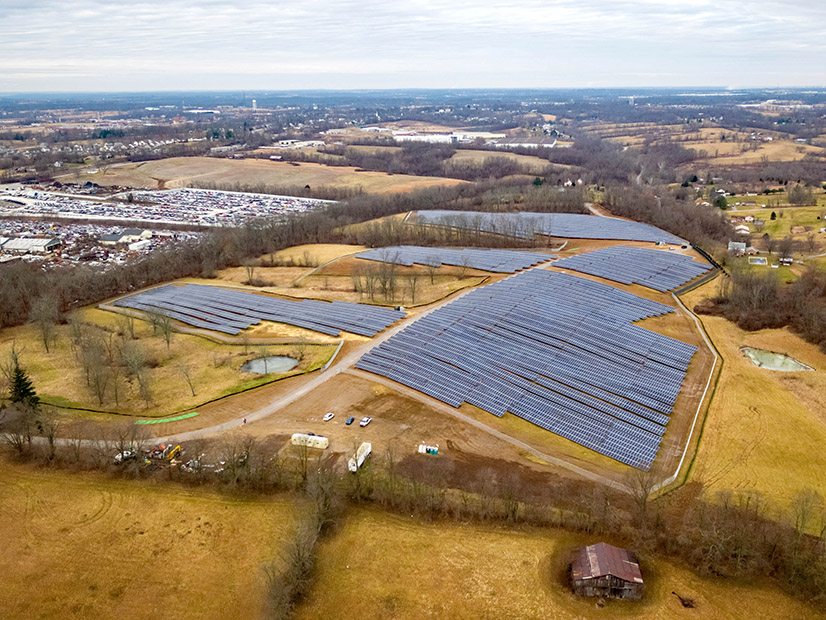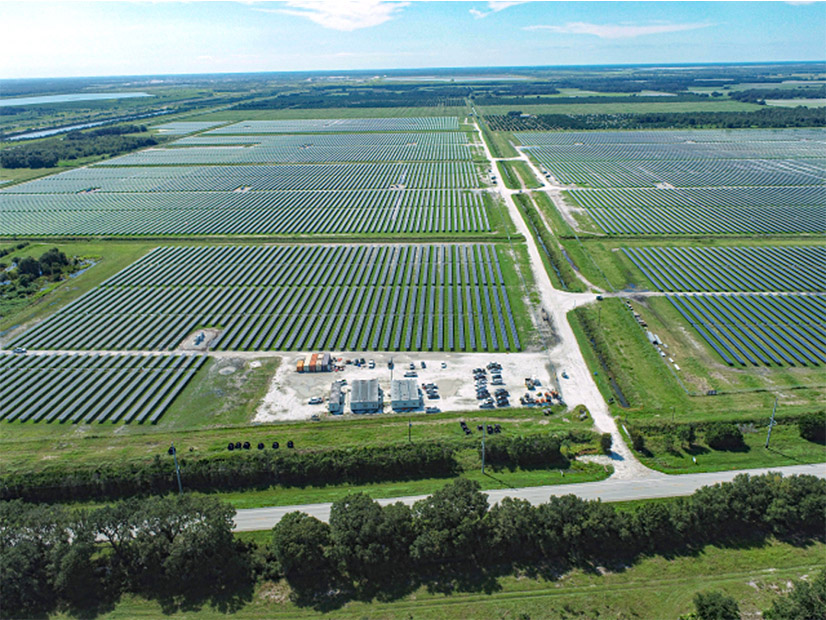
Duke Energy this week estimated the cost of its clean energy transition plans at $145 billion over the next decade, $10 billion more than its previous 10-year plan.
The majority of this investment in its seven regulated utilities — $75 billion — is projected to be for grid modernization. The rest would go to battery storage and zero-carbon power generation from solar, wind, hydro, nuclear and small modular nuclear ($40 billion); new natural gas generation and maintenance ($10 billion); natural gas distribution ($10 billion); and other expenses including coal maintenance, coal ash and corporate activities ($10 billion).
Hydrogen-enabled natural gas technology is included in the total, along with smart technology to detect potential problems and self-healing technology that limits the frequency and duration of power outages.
 Duke Energy Kentucky’s Walton Solar Power Plants 1 and 2 in Kentucky came online in 2018. | Duke Energy
Duke Energy Kentucky’s Walton Solar Power Plants 1 and 2 in Kentucky came online in 2018. | Duke Energy
Duke said the 2023-2032 roadmap will support its efforts to reach more than 50% carbon reduction by 2030, 30 GW of regulated renewable energy by 2035 and net-zero carbon emissions by 2050. Its interim targets are 50% reductions in Scope 2 and Scope 3 upstream/downstream emissions by 2035 and an 80% reduction in Scope 1 emissions by 2040.
Specific 2050 targets include 28 GW of installed energy storage and 40% renewable power generation.
“These critical energy infrastructure investments will also provide substantial economic benefits, including job creation and tax revenue for essential governmental services in our regions,” Duke CEO Lynn Good said in a statement accompanying the economic and climate reports released Tuesday.
The economic report by consulting firm EY placed the direct and indirect benefit of Duke’s plans at 20,000-plus jobs created and $250 billion in output during the 10-year period.
To limit the impact of all this spending on its 8.2 million electric and 1.6 million gas customers, Duke said it is investing to lower the cost and volatility of fuel; leveraging clean energy tax credits; transitioning to renewables that generate without fuel costs; and making changes to cut the cost of storm restoration. The recently passed Inflation Reduction Act will further reduce customer costs, it said.
Factors that will control the pace of investment include scalable supply chains; grid planning; and federal, state and local approvals.
 Duke Energy Florida’s Duette Solar Power Plant came online in 2021. | Duke Energy
Duke Energy Florida’s Duette Solar Power Plant came online in 2021. | Duke Energy
Potential problem points include shortages of skilled labor or materials; slow evolution of numerous technologies that do not currently exist in scalable form; an insufficient or overly expensive supply of renewable natural gas; and site acquisition. For example, Duke’s proposed Carolinas Carbon Plan calls for 12 GW of new solar installed in the next 13 years, which by a conservative estimate of at least 8 acres/MW would entail a 96,000-acre footprint.
Finally, state regulators must allow Duke to recover the costs of its investments from ratepayers, the company said.
Through 2021, Duke had reduced the carbon emissions of its generating fleet 44% from 2005 levels, in part through what it said is the largest planned coal fleet retirement in the industry. Duke expects coal to account for only 5% of its generation mix by 2030 and be eliminated altogether by 2035.


